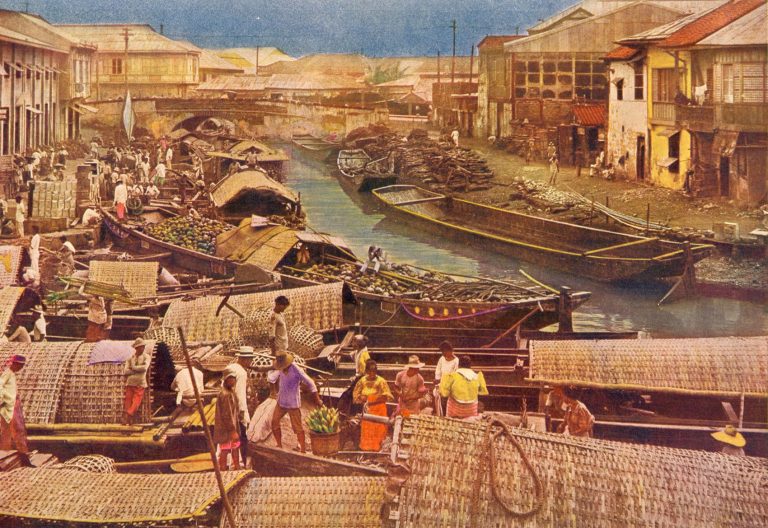The peoples of China and the Philippines are not recent acquaintances. During 960 – 1127 AD, Arab merchants transported Philippine goods to southwestern China through the port of Canton. With the coming of the Spaniards late in the 16th century, Chinese trade with the islands started to increase gradually, not only in the City of Manila but all over the country.
The Sangleys, as the Spaniards called the Chinese, did extremely well in all the trades and crafts. They, along with the Japanese, Indian, and Malay merchants, were herded into the Parian, an area outside Intramuros but within the range of its gun. Binondo, from the Tagalog word Binundok or Minondoc meaning ‘like a mountain’ was an offshoot of the Parian.
With its labyrinth of narrow streets, storehouses, and shops the district seems barely altered after centuries as the city’s Chinese quarter. The thoroughfares identify the specializations into which an assortment of trade functions providing a city’s needs fall into place.
An ‘island’ between two esteros, Binondo provides an interesting glimpse of the culture of a small borough within the big city. While its importance as a financial hub has waned, its significance as the primary Filipino-Chinese community in the country remains and will continue to thrive.
The exhibit is a peek of Manila’s Chinatown at different periods in history through photographs, prints, and maps from the Lopez Memorial Museum and Library. As the first culminating exhibit of the Yuchengco Museum and the University of the Philippines-Manila’s Young Curators Program, part of the exhibit is a section prepared by Philippine Arts 164 class wherein old pictures alongside more recent photographs as well as some thoughts and insights by the students are put up to illustrate how far Binondo has come.
